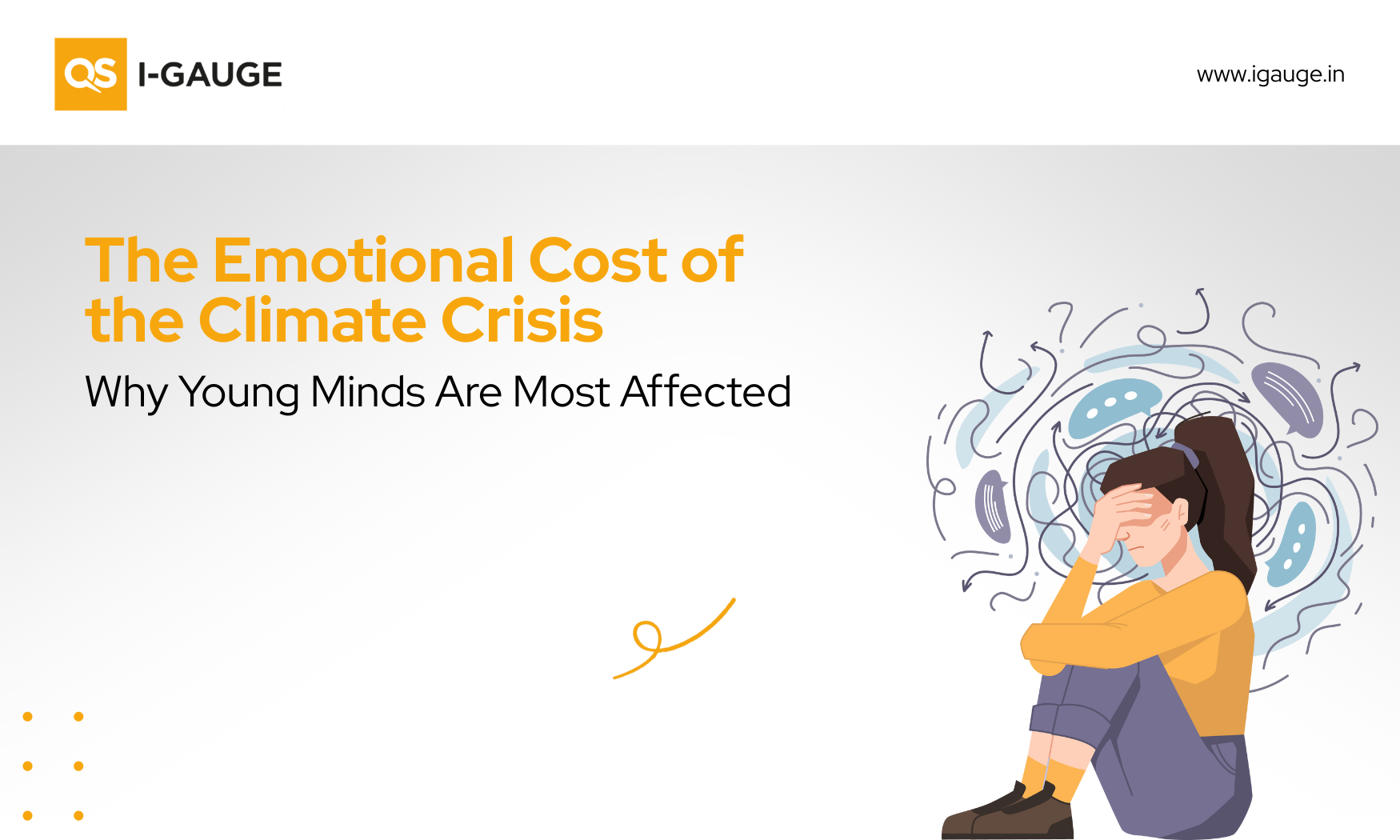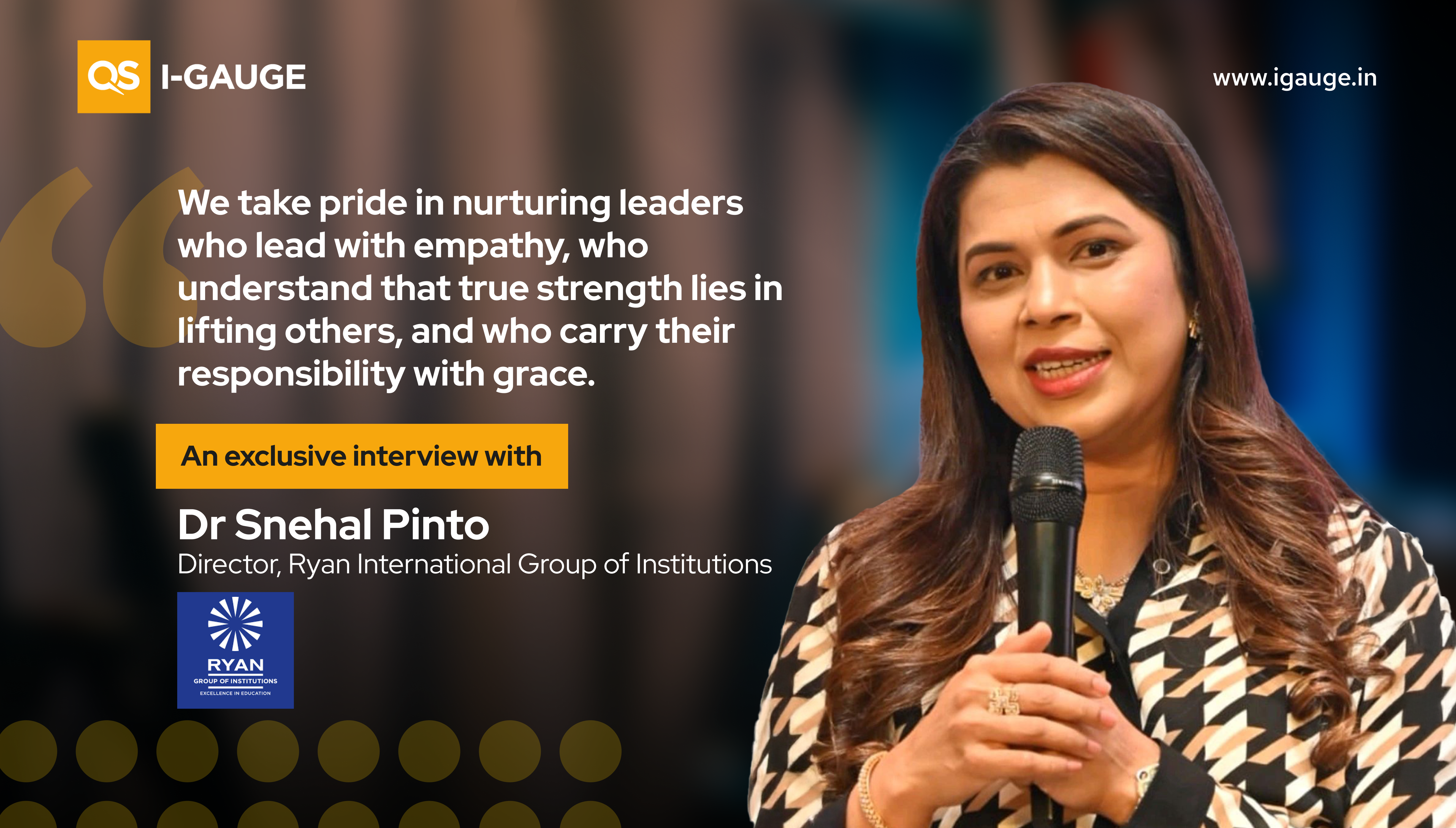 (1)-1.png)
Written by Dr Pariniti Om Singh, Sr. Research Analyst, QS I-GAUGE
Higher education in India has undergone a significant transformation over the past couple of decades, evolving from a system primarily focused on rote learning and an overemphasis on theoretical knowledge to one that promotes competency development, innovation, and global competitiveness. Various factors, including government initiatives, industry collaborations, technological advancements, and a growing demand for quality education among Indian students, have propelled the pursuit of excellence in Indian higher education.
The All-India Survey of Higher Education (AISHE) for the year 2021-22 reveals significant growth in the Indian education ecosystem with a total of 64,804 Higher Education Institutions (HEIs) comprising 1,168 universities, 45,473 colleges and 12,002 stand-alone institutions. The trend indicates a steady growth compared to the 2020-21 survey results. Such a swift expansion highlights the dynamic nature and strength of the Indian education sector, showcasing the government's commitment to enhancing higher education accessibility for all.
The inclusive growth in HEIs across the country signifies a positive trajectory towards a more robust and dynamic education ecosystem in India. This expansion not only provides students with a wide range of educational opportunities but also contributes to the nation's overall socio-economic development. With the government's continued focus on promoting innovation, research, and quality education, the Indian higher education sector is poised for continuous growth and excellence in the years to come.
A bundle of Initiatives
In the last decade, several initiatives have been taken by the Indian government to uplift the quality of higher education in the country. Beginning with Skill India Mission, [launched in 2015], is an umbrella initiative that encompasses various schemes such as Pradhan Mantri Kaushal Vikas Yojana (PMKVY), National Skill Development Mission (NSDM), Skill loan scheme, Skill acquisition and knowledge awareness for livelihood promotion (SANKALP), UDAAN etc. The focus on creating an empowered workforce through various vocational training centres, infrastructure investment, financial support and the launch of the schemes above has aided in closing the gap between the skills required by the industry and the offerings of HEIs.
Launched by the Ministry of Education under the One Nation One Digital Platform mission, the PM eVidya scheme aimed not only at supporting children during COVID-19 but also laid the foundation for creating a digital infrastructure for all forms of e-content. It involves the Digital Infrastructure for Knowledge Sharing (DIKSHA), SWAYAM portal, Swayam Prabha TV Channels, use of community radio and podcasts, e-content for CWSN (Children with Special Needs) and online coaching for competitive exams.
Efforts have also been made to upgrade teachers' skills, teaching methodologies, and pedagogy through programs like the Integrated Teacher Education Program (ITEP) and the National Initiative for School Heads and Teachers Holistic Advancement (NISHTHA). These programs aim to improve teaching quality and encourage innovative pedagogical practices.
Launching the visionary New Education Policy (NEP) 2020 to overhaul the country's education system has bolstered a bundle of initiatives across all educational institutions. It is based on pillars of accessibility, equity, quality, affordability, and accountability, rooted in the Indian ethos, set to contribute to the nation's development.
Furthermore, the government’s initiatives to promote research, innovation, and entrepreneurship across the country have culminated in establishing the Atal Innovation Mission (AIM). With 40+ domestic and international partnerships, incubation centres, tinkering labs, and innovation centres, the mission has successfully kindled the dreams of millions of Indian students. The recent collaboration of AIM with META® to set up Frontier Technology Labs (FTL) across schools in India is a visionary step in democratising education in India.
The above-mentioned initiatives are not exhaustive; they provide a snapshot of policies aimed at bridging the quality gap between Indian and global education systems, fostering innovation and creativity, promoting employability, and preparing students to meet the challenges of a rapidly evolving world. While these schemes and initiative programs act as the hardware for uplifting the higher education ecosystem in the country, we must also focus on intangible aspects of development and progress. The satisfaction of key stakeholders plays a vital role in aiding this task.
Accounting for the perception of stakeholders acts as a measure of a reality check for institutions to better cater to their needs and demands for driving continuous improvement. If educational stakeholders are unsatisfied, then the whole initiative of schemes and programs nullifies the efforts. Thus, with overall institutional progress in mind, let us review the current snapshot of stakeholder satisfaction with academic institutions in India.
Stepping into an era where good is not good enough!
In the ever-evolving landscape of the education industry, the notion of ‘good’ no longer suffices when it comes to meeting the expectations of students, faculty and alumni. Students are no longer satisfied with [merely] obtaining a degree; they seek meaningful employment opportunities and skill development that will set them apart in a competitive job market. On the other hand, faculty members crave more than job security - they seek continuous professional development and research opportunities that will enable them to stay ahead of the curve. Alums look forward to fruitful collaborations and opportunities to share their expertise and industry insights with their associated institutions. As such, HEIs face increasing pressure to meet these elevated expectations across all facets of the education experience since it is invariably linked to the institution's perception in the eyes of the stakeholders. The way an institution supports, behaves, respects, and caters to the needs of the faculty, students, and alums shapes their perception, which can have long-lasting positive or negative consequences for the HEI. The institutions need to not only address but should be responsible enough to excel in all parameters because:
In this era, "good" is simply not good enough.
Recent surveys by QS I-GAUGE on the satisfaction level of key stakeholders in HEIs revealed some interesting statistics. In the latest survey conducted across select Indian HEIs, 57,042 students reported elevated levels (85%) of overall satisfaction gauged as a perception of their institution on various parameters. The overall satisfaction level helps to understand students' perceptions of quality parameters (such as curriculum, assessment, course delivery, resources, faculty quality, employment opportunities, accommodation, extracurricular activities, skill development programmes, etc.) at their institution.
Diving deeper into the survey results (Figure 1), it was found that the teaching satisfaction level stood at 90%, which indicates the growing competencies and capabilities of teaching faculty in higher education. However, career services were marked down at 85.5%, which might indicate an industry-academia misunderstanding of skill gaps and lack of connection. Concerning amenities such as sanitation, food, WI-FI, and Library Services, the satisfaction levels range between 80-90%. Furthermore, satisfaction with the safety and security on campus, essential for both the students and their parents, stood at 90.4%, emphasising constantly the institution's responsibility to provide a safe environment for its students.

The QS I-GUAGE student survey is not only holistic but also progressive in its approach. An important parameter called ‘academic freedom’ is also gauged at the institution's discretion. It looks at the freedom of speech and expression on campus, freedom of choice in selecting courses, freedom to express views in the institution's governance, determining the course delivery mode and expressing dissatisfaction with the administration and its policies. The discretionary power solely vests with the institution to select this progressive parameter for evaluation. It has been observed from our data that more and more Indian HEIs are opting for this survey, which is indicative of a culture of accepting one's own shortcomings and accepting constructive criticism for growth and development. The responses collected from 56,592 students on this parameter are depicted in Figure 2.

Similarly, the ‘entrepreneurship survey’ is also a discretionary survey undertaken by the institutions to measure students' satisfaction levels with the institution. It is an important benchmark to measure because entrepreneurship opportunities allow students to cultivate critical thinking, explore leadership styles, calibrate risk and reward and learn strategic thinking processes. The survey looks deeply at the opportunities and financial support provided to students for entrepreneurial activities. The results collated from 37,305 students are highlighted in figure 3.

Similar to the student satisfaction survey, QS I-GAUGE also conducts a faculty survey (figure 4) to address the satisfaction levels of teaching faculty in HEIs. Data gathered from 7,093 faculty members revealed that the majority of them were (in general) satisfied (88%) with the institution. However, when it comes to the compensation, rewards, and time provided for personal development or research, the satisfaction levels went down by at least 5-10%. This calls for a deeper examination of the administrative and academic system of the HEIs.

Academic freedom for faculty acts as a catalyst in their performance and career progression. The freedom to serve on institutional governing bodies, the ability to express dissatisfaction with administrative policies, and the ability to determine the mode of course delivery and assessment are some of the ways they achieve freedom of speech and expression in a bureaucratic setting. Institutions providing opportunities to challenge this system allow for faculty growth and intellectual debate without the fear of censorship. Indian HEIs must address this issue because the survey results were alarming on specific parameters. The satisfaction percentage of faculty was only 72%, given the freedom to express dissatisfaction with administrative policies and 79% given the freedom to engage in intellectual debate without the fear of censorship [see Figure 5]. Nonetheless, the satisfaction levels on other parameters seemed to be progressive.

The role of ratings in stakeholder satisfaction improvement
To improve stakeholders' satisfaction levels, institutions must prioritise student-centric policies and provide appropriate resources for faculty. By addressing their issues and making necessary changes, institutions can work towards creating a more positive and enriching educational experience for both crucial stakeholders.
The internal feedback collected by HEIs must be consolidated adequately and scrutinised for corrective measures and plausible policy interventions. For senior management to become receptive to change, a willingness to accept the institution's shortcomings is paramount.
This is where the QS I-GAUGE rating plays a crucial role in helping institutions meet quality benchmarks and achieve stakeholder satisfaction. Soliciting feedback from students, faculty, and alumni allows QS I-GAUGE to guide institutions in creating a roadmap for success. The shortcomings in institutional performance are gauged at multiple levels, and an in-depth analysis reveals areas for improvement.
The rating feedback loop enables institutions to tailor their offerings better to meet the needs and expectations of their stakeholders, leading to increased satisfaction. In doing so, the rating framework helps institutions stay competitive and drive continuous improvement, ensuring they remain at the forefront of innovation and educational excellence.
The data collected from institutional surveys, which account for a quarter of the rating points in the HEI methodology, is presented in the form of a gap analysis conducted by the research team. This analysis informs institutions about the perceptions of their key stakeholders.
The higher education landscape in India is steadily evolving to meet international standards and cater to the diverse needs of its student population. The introduction of various initiatives, such as the National Education Policy 2020 and various skill development programs, highlights the government's commitment to improving the quality of education in the country. Despite the progress made, there are still challenges that need to be addressed, particularly regarding student and faculty satisfaction. It is crucial for institutions to actively listen to internal feedback and implement necessary changes to enhance the overall education experience. Leveraging the QS I-GAUGE rating system helps institutions benchmark themselves against national standards and identify areas for improvement.
*For more information on QS I-GAUGE rating methodology, please refer to https://www.igauge.in/institute/methodology



